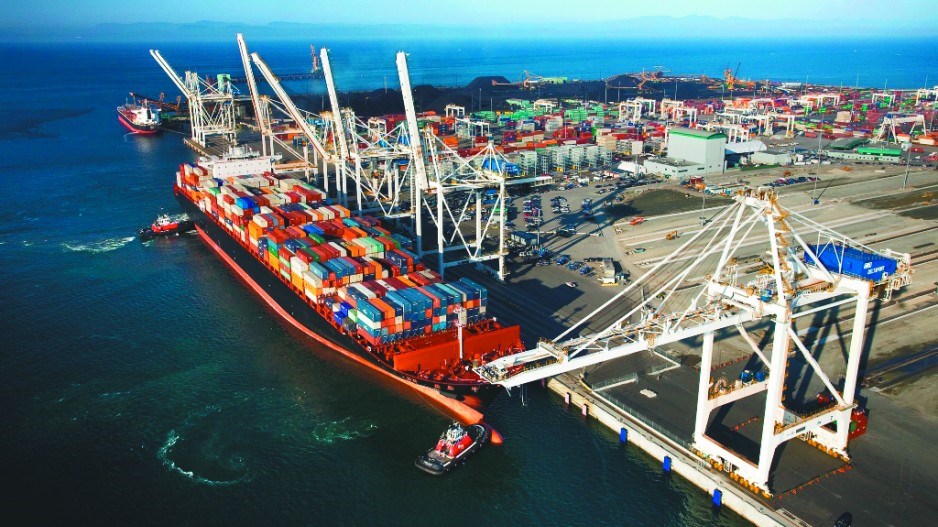Canada’s four largest seaports represent a potential $3 billion cash boon to Ottawa, according to a recent C.D. Howe Institute report.
Casting Off: How Ottawa Can Maximize the Value of Canada’s Major Ports and Benefit Taxpayers estimates the potential equity from involving private investment in Canada’s major port operations ranges from $2.6 billion to $3.4 billion.
Steven Robins, the report’s author, argues that private investors would do a better job of allocating risk capital to finance port expansions than Canada port authorities (CPAs), which oversee the operations of the country’s major ports, especially “where expected demand is unclear.”
He pointed to the Port of Vancouver’s (PoV) proposed $2 billion Terminal 2 container cargo port expansion at Roberts Bank as an example of where “the federal government should cast a critical eye.”
Robins noted that while the $863 million the PoV had committed to container expansion projects as of the end of 2016 were not direct tax dollars, “this money could instead be returned to the federal government and devoted to other priorities. So taxpayers are investing in the project.”
Debate over port privatization has been swirling since last November when Justin Trudeau’s Liberal government hired Morgan Stanley Canada Ltd. to study privatization’s potential.
Canada has 18 major ports. Vancouver and Prince Rupert are two of the largest. Another 29 smaller regional ports are owned by various levels of government, and 21 remote ports remain under direct Transport Canada control.
The report estimates that PoV alone has an equity value nearing $2 billion.
The Port of Prince Rupert’s estimated equity value is between $300 million and $400 million.
Robin Silvester, the Vancouver Fraser Port Authority’s (VFPA) president and CEO, has raised several concerns about port privatization, including loss of port infrastructure investment funds and the disruption of a port governance model that works well.
CPAs, which are governed by the federal government, act as landlords for terminal operators on federal port lands. They also approve smaller port infrastructure projects and are responsible for harbour maintenance and safety.
The VFPA manages leases for 27 privately owned and operated terminals.
Under Canada’s current management model, profits from managing a port’s land are reinvested into that port.
Robins argues that those profits could be used for higher-priority infrastructure projects elsewhere.
According to his report, the highly competitive marketplace facing port operators reduces the need for public ownership to prevent monopolistic port pricing. It also notes that Canada’s major ports already operate with significant private investment.
“The federal government should seek to capture greater returns from its land ownership at these ports – first by receiving dividends from the port authorities, and if there is a need for upfront cash flow, from seeking greater involvement from private capital,” Robins said in a press release.
At the Cargo Logistics Canada conference held earlier this year in Vancouver, Brad Eshleman, president of Western Stevedoring, was involved in a panel discussion on the challenges of port privatization.
“Once the port has been monetized, that revenue stream is gone, and it is no longer available for trade or infrastructure,” said Eshleman during the discussion.
“How will we pay for development and infrastructure? The funding would likely come from users, with the fees likely to increase.”
Eshleman said fee increases could reduce competitiveness, increase domestic prices and potentially divert container and other traffic to competing ports in the United States and elsewhere.
But the C.D. Howe report argued that port privatization would make “little noticeable difference for shippers” and that the unlocked equity value could be reallocated to address high-priority infrastructure needs for Canadians not just ports. •
–With files from Timothy Renshaw




